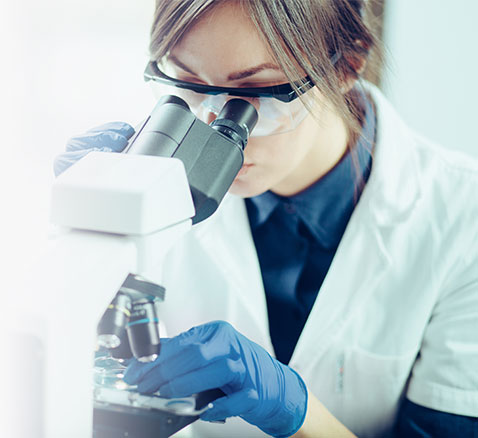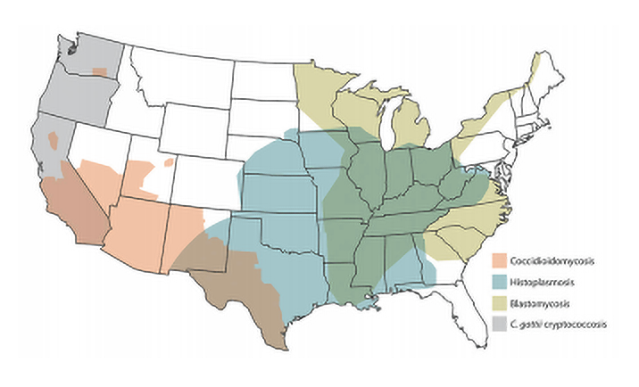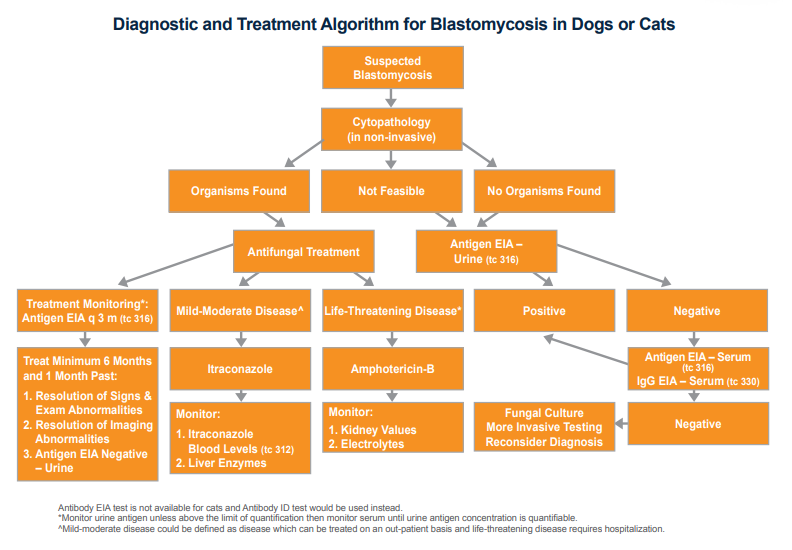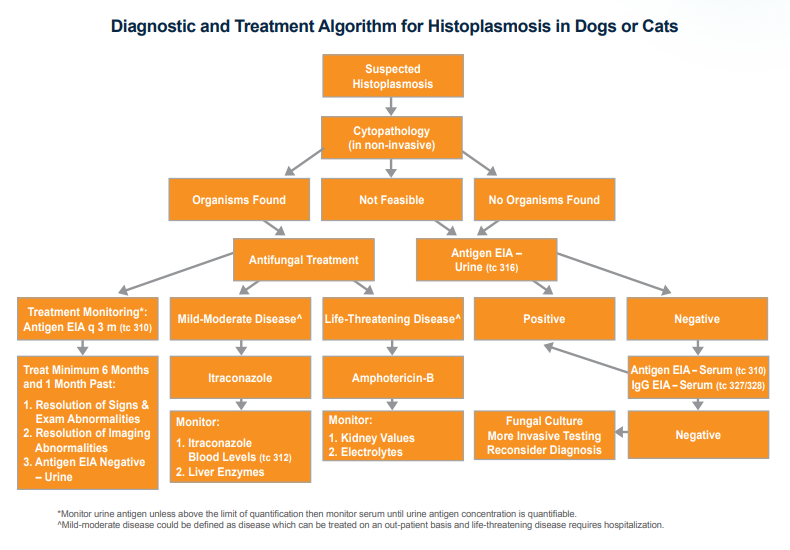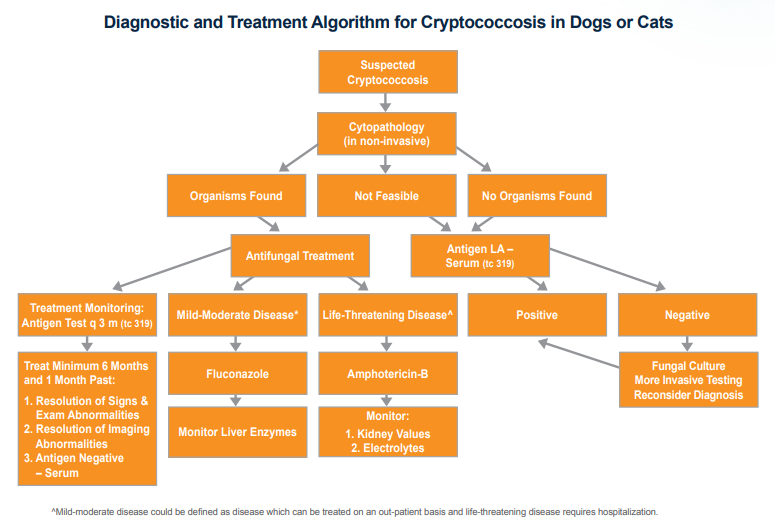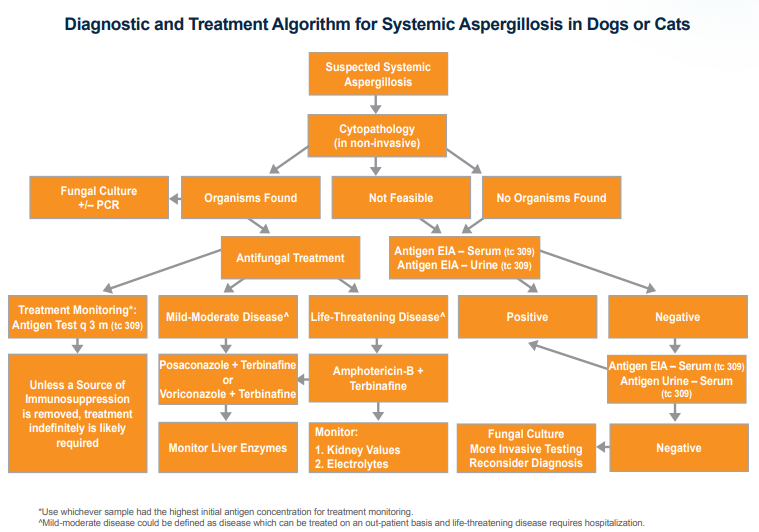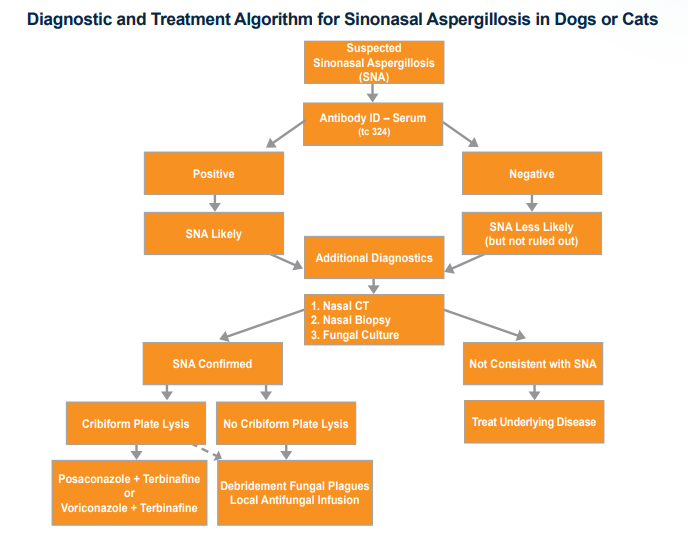Fungal Testing Overview
Fungal antigens, fungal DNA, and anti-fungal antibodies can be used as non-invasive biomarkers for invasive fungal infections (IFIs). MiraVista Diagnostics (MVD) specializes in developing diagnostic tests to detect these biomarkers. These tests provide a rapid, cost-efficient alternative to invasive testing, often required otherwise to diagnose IFIs. Over the past 20 years MVD tests have revolutionized diagnosis and treatment monitoring of IFIs in animals. Use has been reported in many peer-reviewed publications. The reported diagnostic performances are found below.
Diagnostic performance of MVD fungal tests. Bolded tests are the recommended first non-invasive diagnostic test(s) to be performed.
*Blastomyces antigen test on urine is also the first-choice test for cats.
^Minimum sample volume required for testing.
#Specificity was often provided for non-fungal disease.
EIA, enzyme immunoassay; ID, immunodiffusion; LA, latex agglutination
Geographic location of enzootic invasive fungal infections (IFIs) is an important consideration. Cryptococcosis and aspergillosis, along with other invasive molds, occur anywhere in the U.S. Although infections can occur sporadically anywhere, IFIs due to dimorphic fungi (Blastomyces, Histoplasma, and Coccidioides) are found more commonly in predictable locations. The map below provides a rough estimate of enzootic regions.
Invasive fungal infections (IFIs) commonly include non-specific findings such as lethargy, anorexia, weight loss, and fever unresponsive to antibiotics. Other more specific findings are also often present and can help guide diagnostic testing. Any IFI can affect any single organ or be multi-systemic, but patterns exist.
Common anatomic locations and clinical signs of invasive fungal infections in dogs and cats.
| PATHOGEN | SPECIES AFFECTED | COMMON ORGANS INVOLVED | COMMON CLINICAL SIGNS |
|---|---|---|---|
| Blastomyces | Dog>>>Cat | Lung Lymph nodes Skin Eyes/periocular tissues Bones/joints Testicles/prostate (dog) |
Anorexia Weight loss Fever Tachypnea Cough Lameness Vision disturbance Cutaneous Lesions |
| Histoplasma | Cat>Dog | Lung Lymph node Spleen & Liver Eyes/periocular tissues Bone marrow Bone/joints (cat) GI tract (dog) |
Anorexia Weight loss Fever Tachypnea Lameness Vision disturbance Cutaneous lesions Diarrhea |
| Cryptococcus | Cat>>>Dog | Nasal cavity & sinuses Eyes & periocular tissues Lymph nodes Skin CNS Abdominal viscera (dog) |
Nasal discharge Facial deformity Cutaneous lesions Blindness CNS signs Vomiting, diarrhea (dog) |
| Coccidioides (valley fever) |
Dog>>Cat | Lung Lymph nodes Skin Eyes CNS Bones/joints |
Anorexia Weight loss Tachypnea Cough Lameness Cutaneous lesions CNS signs |
| Aspergillus (systemic) |
Dog>>>Cat | Bone/joints Vertebral end plates CNS Kidney Lymph nodes Skin Eyes Abdominal viscera |
Anorexia Weight loss Fever Lameness Vision disturbance CNS signs Cutaneous lesions PU/PD |
| Aspergillus (sinonasal) |
Dog>>Cat | Nasal cavity Sinuses Orbit CNS |
Nasal discharge Nasal depigmentation Facial deformity CNS signs |
With many available tests, choosing the best test can be challenging. In some cases, a combination of tests for a specific pathogen is preferred. For others, sequential testing might be needed. Considering the overlap of clinical findings, and enzootic areas, testing for multiple fungal pathogens is appropriate in many cases. To help simplify test selection, and treatment considerations, algorithms are provided below.
REFERENCES:
- Motschenbacher LO, Furrow E, Rendahl AK, et al. Retrospective analysis of the effects of Blastomyces antigen concentration in urine and radiographic findings on survival in dogs with blastomycosis. J Vet Intern Med 2021.
- Mourning AC, Patterson EE, Kirsch EJ, et al. Evaluation of an enzyme immunoassay for antibodies to a recombinant Blastomyces adhesin-1 repeat antigen as an aid in the diagnosis of blastomycosis in dogs. J Am Vet Med Assoc 2015;247:1133-1138.
- Spector D, Legendre AM, Wheat J, et al. Antigen and antibody testing for the diagnosis of blastomycosis in dogs. J Vet Intern Med 2008;22:839-843.
- Foy DS, Trepanier LA, Kirsch EJ, et al. Serum and urine blastomyces antigen concentrations as markers of clinical remission in dogs treated for systemic blastomycosis. J Vet Intern Med 2014;28:305-310.
- Arambulo PV, 3rd, Topacio TM, Jr., Famatiga EG, et al. Leptospirosis among abattoir employees, dog pound workers, and fish inspectors in the city of Manila. The Southeast Asian journal of tropical medicine and public health 1972;3:212-220.
- Arceneaux KA, Taboada J, Hosgood G. Blastomycosis in dogs: 115 cases (1980-1995).. J Am Vet Med Assoc 1998;213:658-664.
- Crews LJ, Feeney DA, Jessen CR, et al. Utility of diagnostic tests for and medical treatment of pulmonary blastomycosis in dogs: 125 cases (1989- 2006). J Am Vet Med Assoc 2008;232:222-227.
- Cunningham L, Cook A, Hanzlicek A, et al. Sensitivity and Specificity of Histoplasma Antigen Detection by Enzyme Immunoassay. J Am Anim Hosp Assoc 2015;51:306-310.
- Clark K, Hanzlicek AS. Evaluation of a novel monoclonal antibody-based enzyme immunoassay for detection of Histoplasma antigen in urine of dogs. J Vet Intern Med 2020.
- Cook AK, Cunningham LY, Cowell AK, et al. Clinical evaluation of urine Histoplasma capsulatum antigen measurement in cats with suspected disseminated histoplasmosis. J Feline Med Surg 2012;14:512-515.
- Rothenburg L, Hanzlicek AS, Payton ME. A monoclonal antibody-based urine Histoplasma antigen enzyme immunoassay (IMMY(R)) for the diagnosis of histoplasmosis in cats. J Vet Intern Med 2019;33:603-610.
- Hanzlicek AS, Meinkoth JH, Renschler JS, et al. Antigen Concentrations as an Indicator of Clinical Remission and Disease Relapse in Cats with Histoplasmosis. J Vet Intern Med 2016;30:1065-1073.
- Holbrook ED, Greene RT, Rubin SI, et al. Novel canine anti-Coccidioides immunoglobulin G enzyme immunoassay aids in diagnosis of coccidioidomycosis in dogs Medical mycology 2019;57:800-806.
- Kirsch EJ, Greene RT, Prahl A, et al. Evaluation of Coccidioides antigen detection in dogs with coccidioidomycosis. Clin Vaccine Immunol 2012;19:343-345.
- Johnson LR, Herrgesell EJ, Davidson AP, et al. Clinical, clinicopathologic, and radiographic findings in dogs with Coccidioidomycosis: 24 cases (1995-2000). J Am Vet Med Assoc 2003;222:461-466.
- Gunstra A, Steurer JA, Seibert RL, et al. Sensitivity of Serologic Testing for Dogs Diagnosed with Coccidioidomycosis on Histology: 52 Cases (2012- 2013). J Am Anim Hosp Assoc 2019;55:238-242.
- Arbona N, Butkiewicz CD, Keyes M, et al. Clinical features of cats diagnosed with coccidioidomycosis in Arizona, 2004-2018 J Feline Med Surg 2020;22:129-137.
- Greene RT, Troy GC. Coccidioidomycosis in 48 cats: a retrospective study (1984-1993) J Vet Intern Med 1995;9:86-91.
- Malik R, McPetrie R, Wigney DI, et al. A latex cryptococcal antigen agglutination test for diagnosis and monitoring of therapy for cryptococcosis. Aust Vet J 1996;74:358-364.
- Johnston L, Mackay B, King T, et al. Abdominal cryptococcosis in dogs and cats: 38 cases (2000-2018). J Small Anim Pract 2021;62:19-27.
- Trivedi SR, Sykes JE, Cannon MS, et al. Clinical features and epidemiology of cryptococcosis in cats and dogs in California: 93 cases (1988-2010). J Am Vet Med Assoc 2011;239:357-369.
- Medleau L, Marks MA, Brown J, et al. Clinical evaluation of a cryptococcal antigen latex agglutination test for diagnosis of cryptococcosis in cats. J Am Vet Med Assoc 1990;196:1470-1473.
- Garcia RS, Wheat LJ, Cook AK, et al. Sensitivity and specificity of a blood and urine galactomannan antigen assay for diagnosis of systemic aspergillosis in dogs. J Vet Intern Med 2012;26:911-919.
- Billen F, Peeters D, Peters IR, et al. Comparison of the value of measurement of serum galactomannan and Aspergillus-specific antibodies in the diagnosis of canine sino-nasal aspergillosis. Vet Microbiol 2009;133:358-365.
- Whitney J, Beatty JA, Martin P, et al. Evaluation of serum galactomannan detection for diagnosis of feline upper respiratory tract aspergillosis. Vet Microbiol 2013;162:180-185.
- Barrs VR, Ujvari B, Dhand NK, et al. Detection of Aspergillus-specific antibodies by agar gel double immunodiffusion and IgG ELISA in feline upper respiratory tract aspergillosis. Vet J 2015;203:285-289
